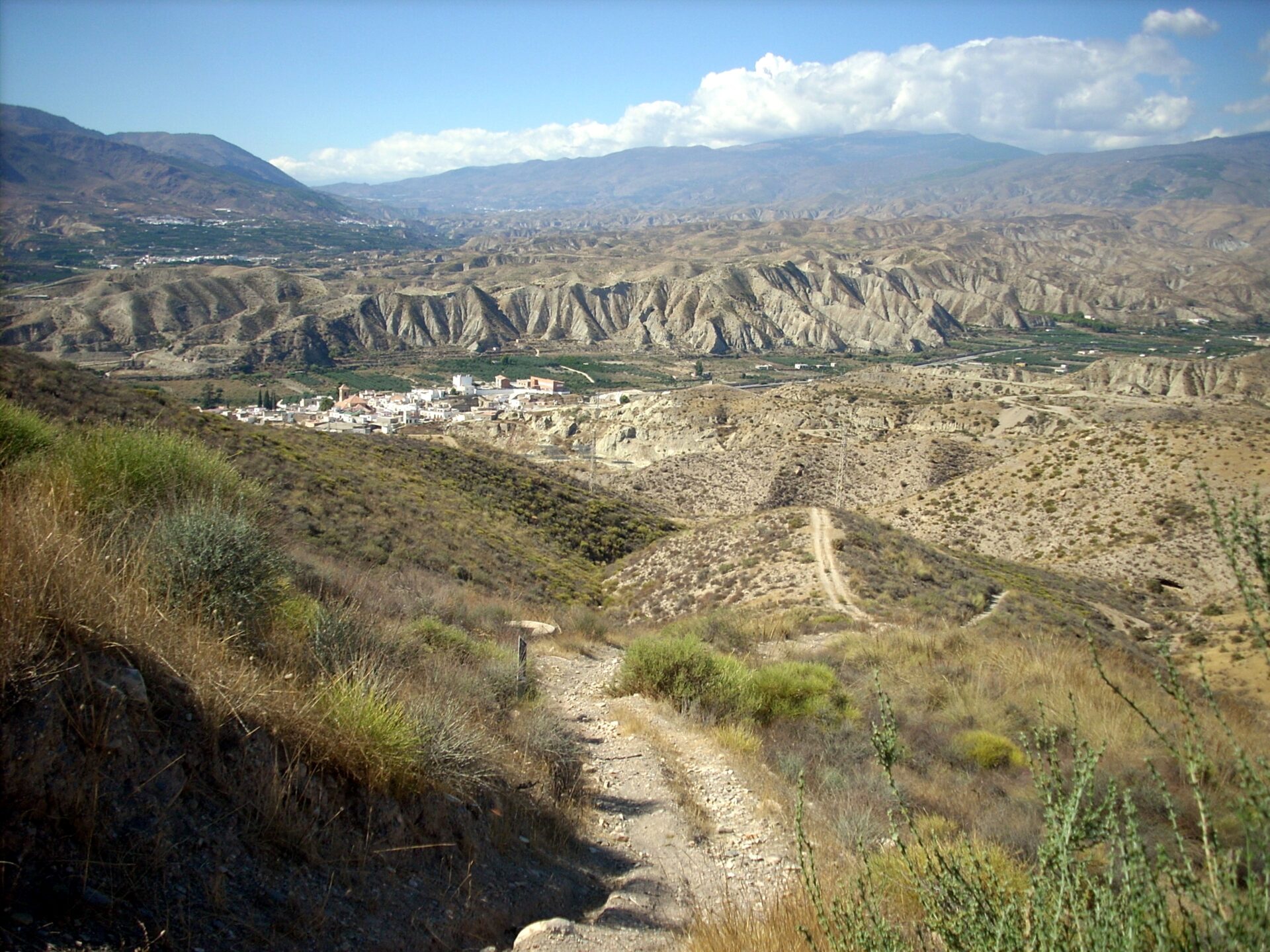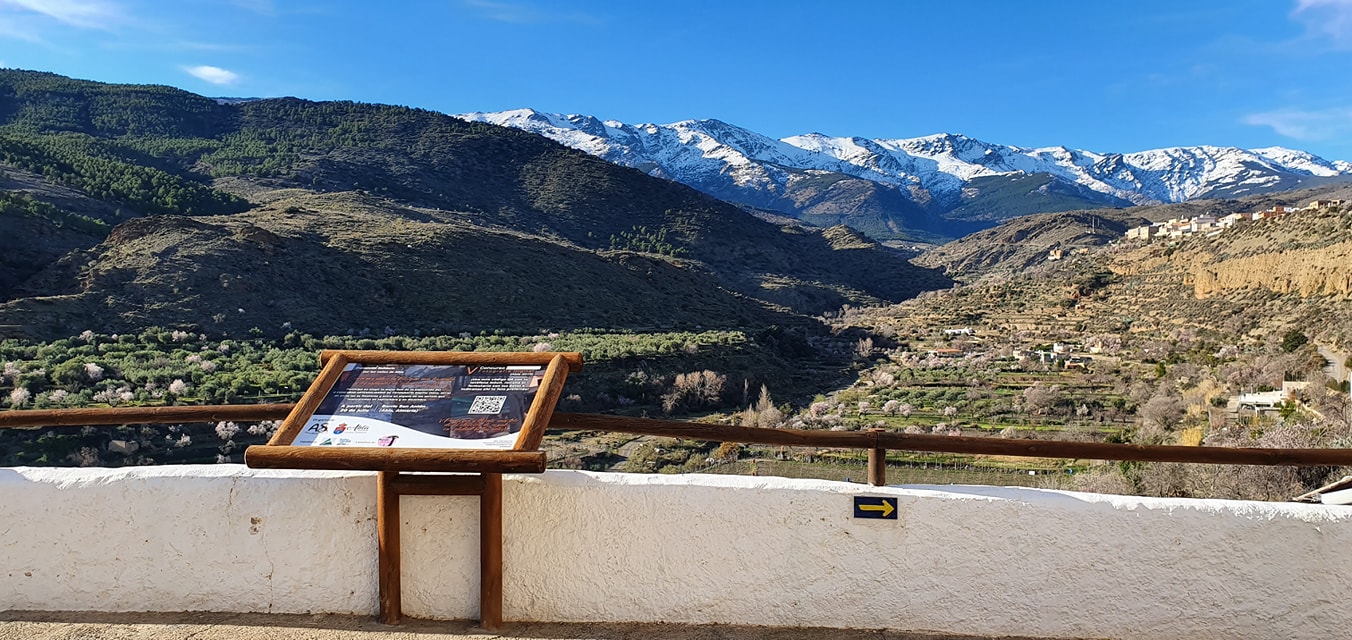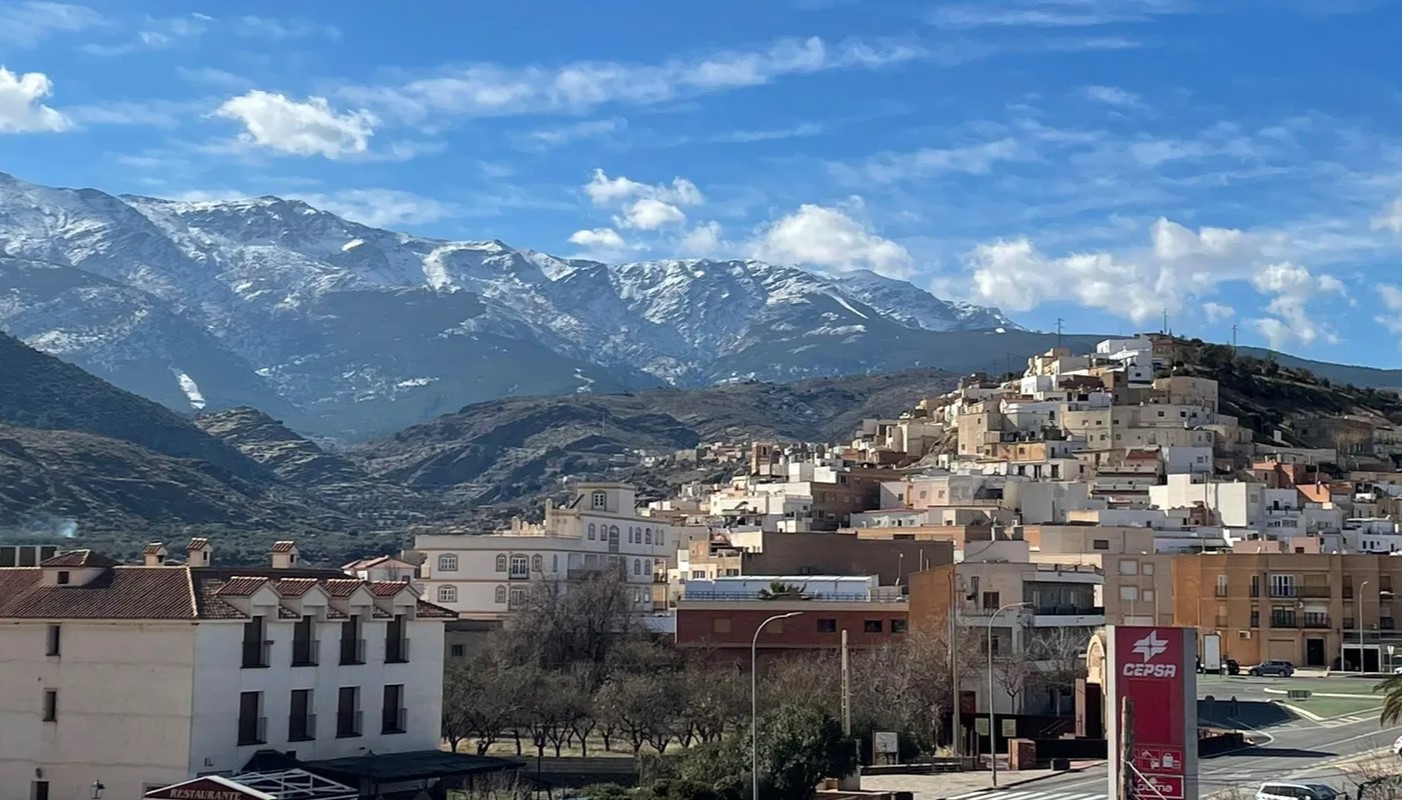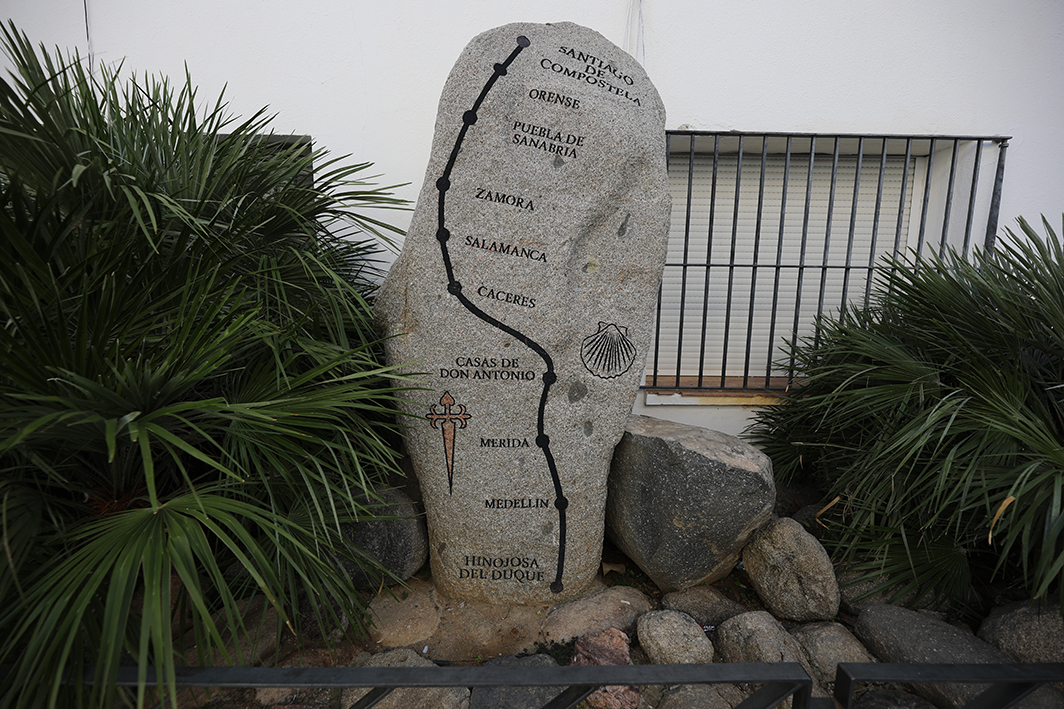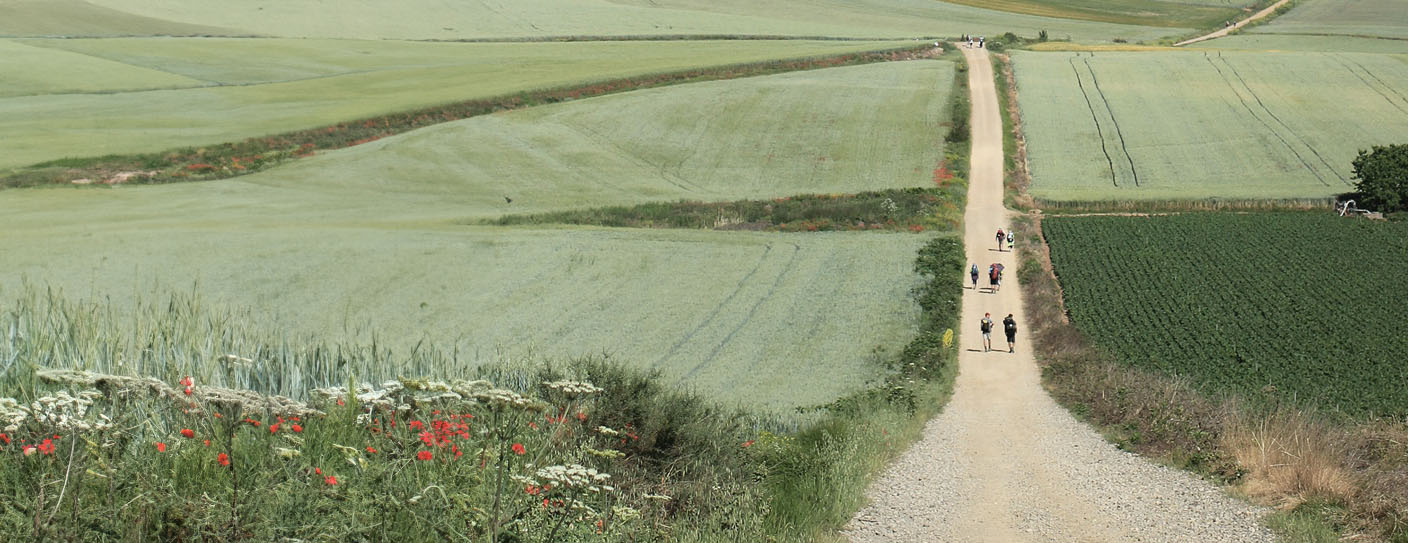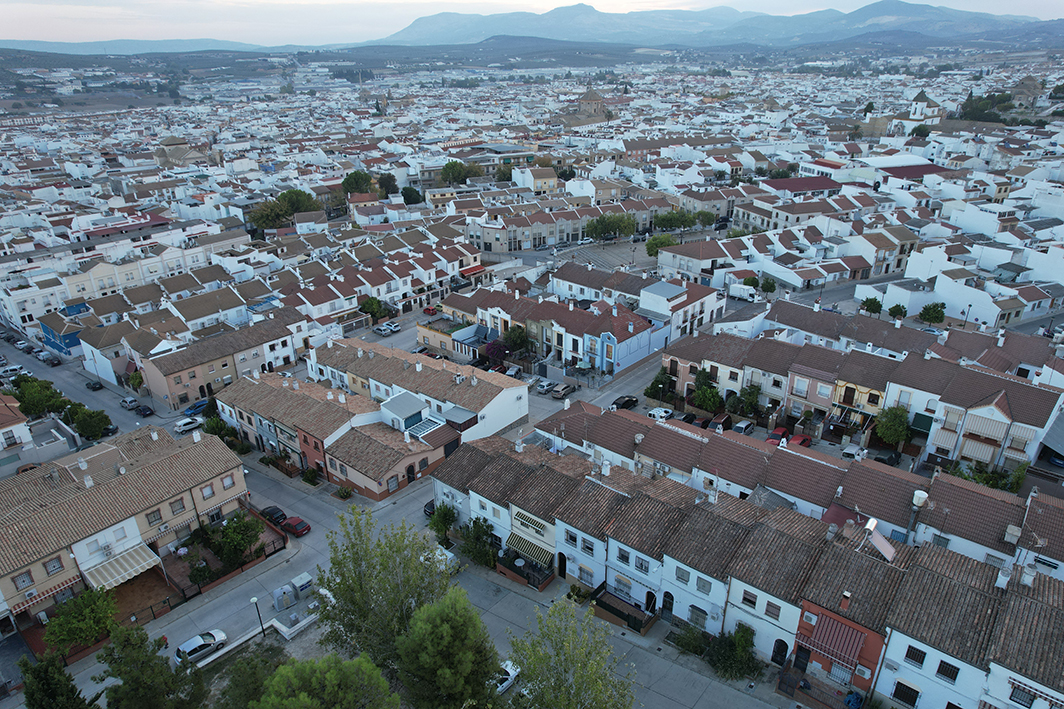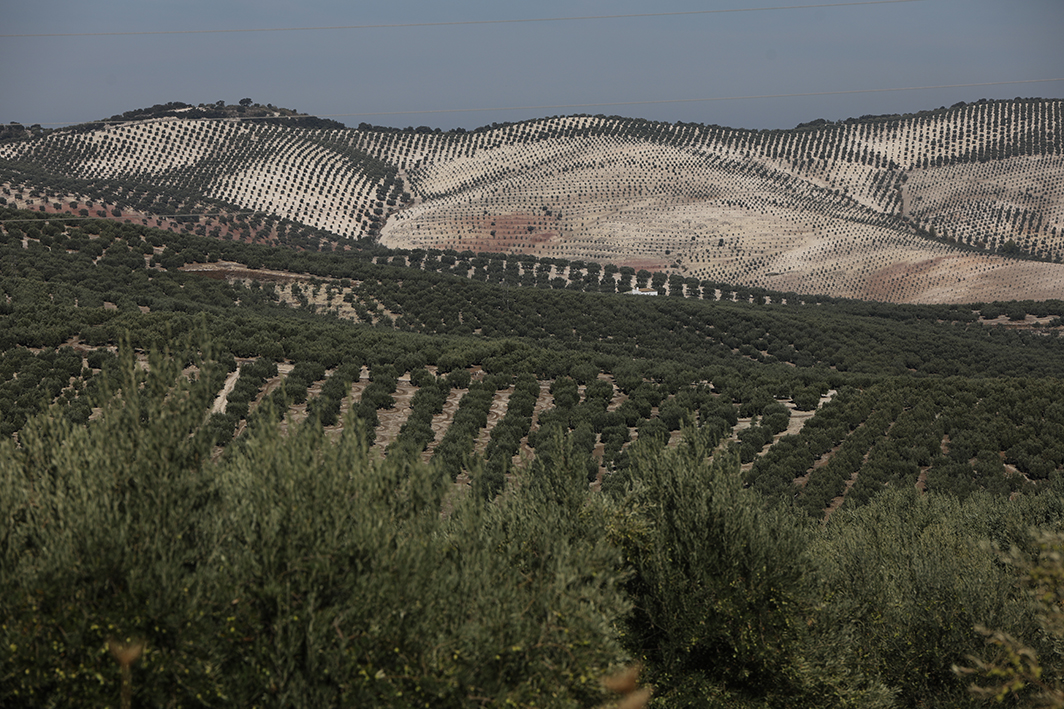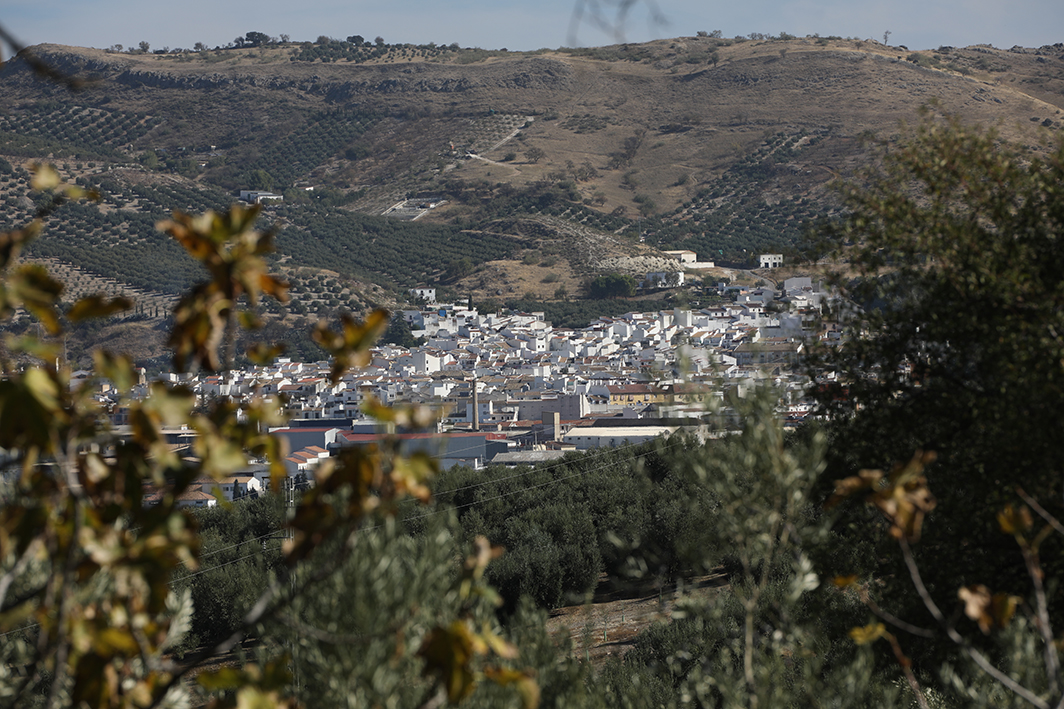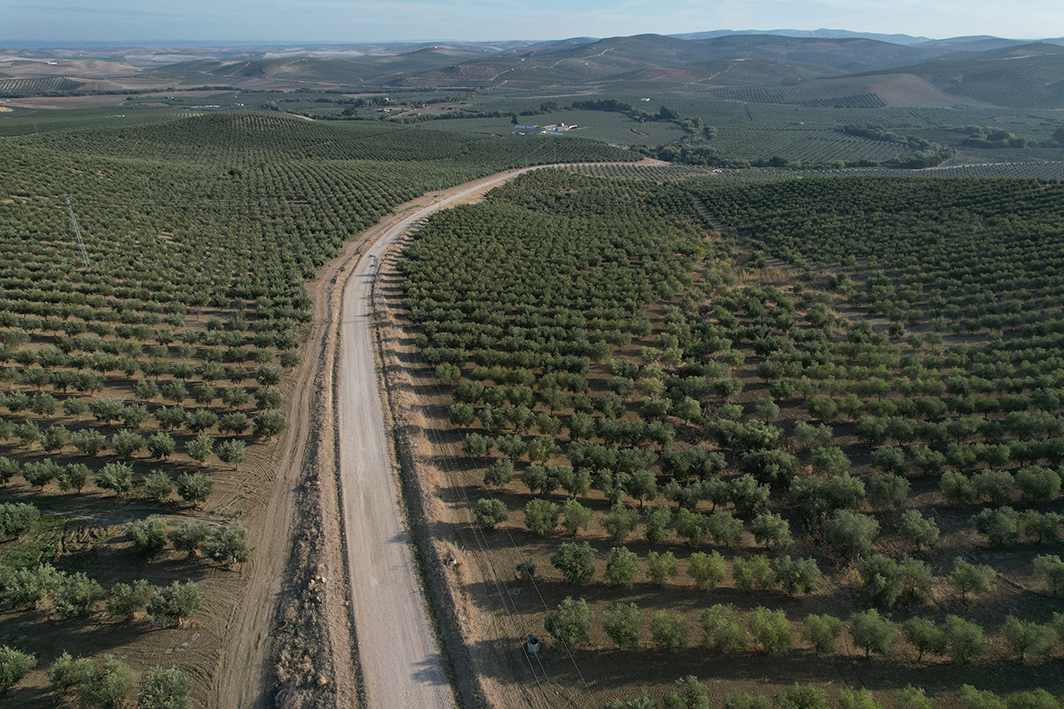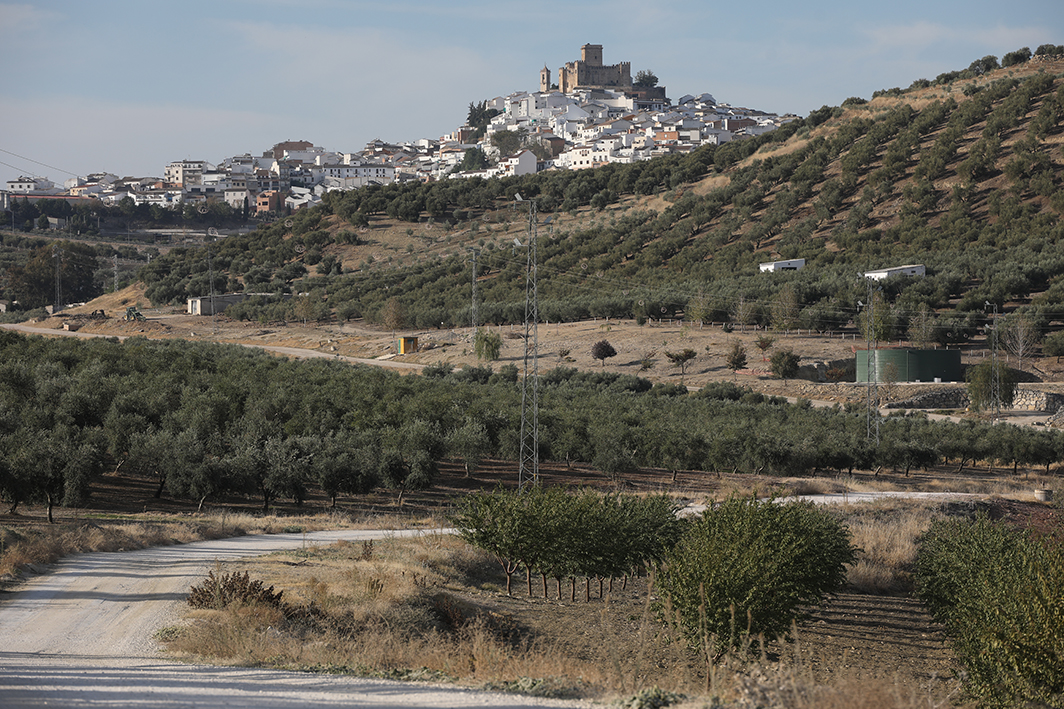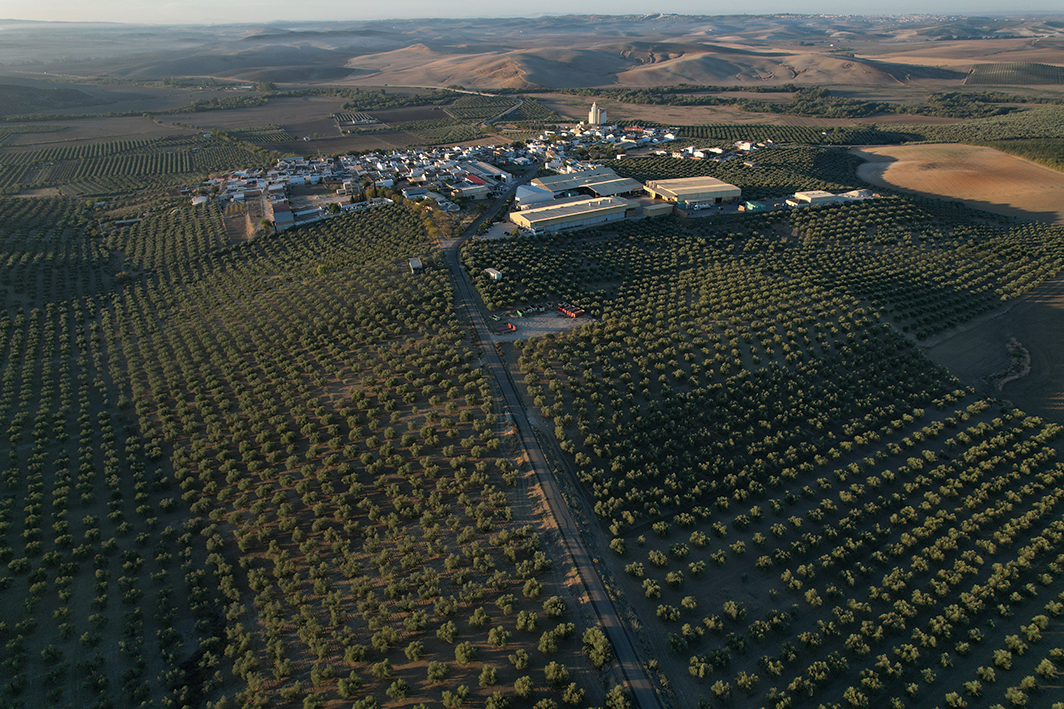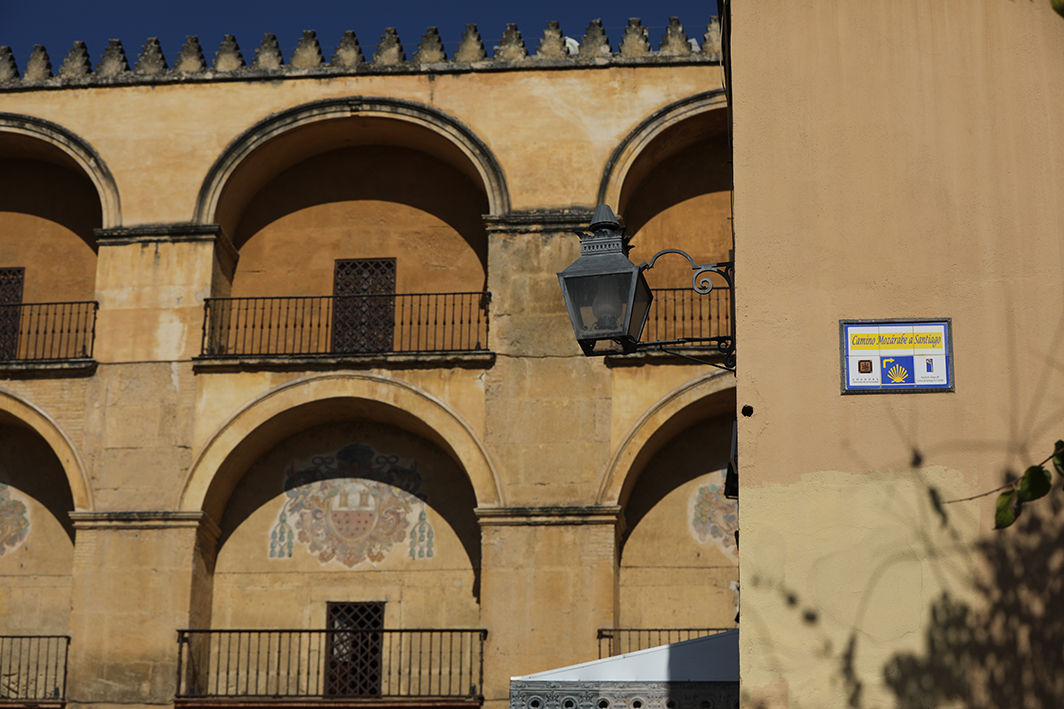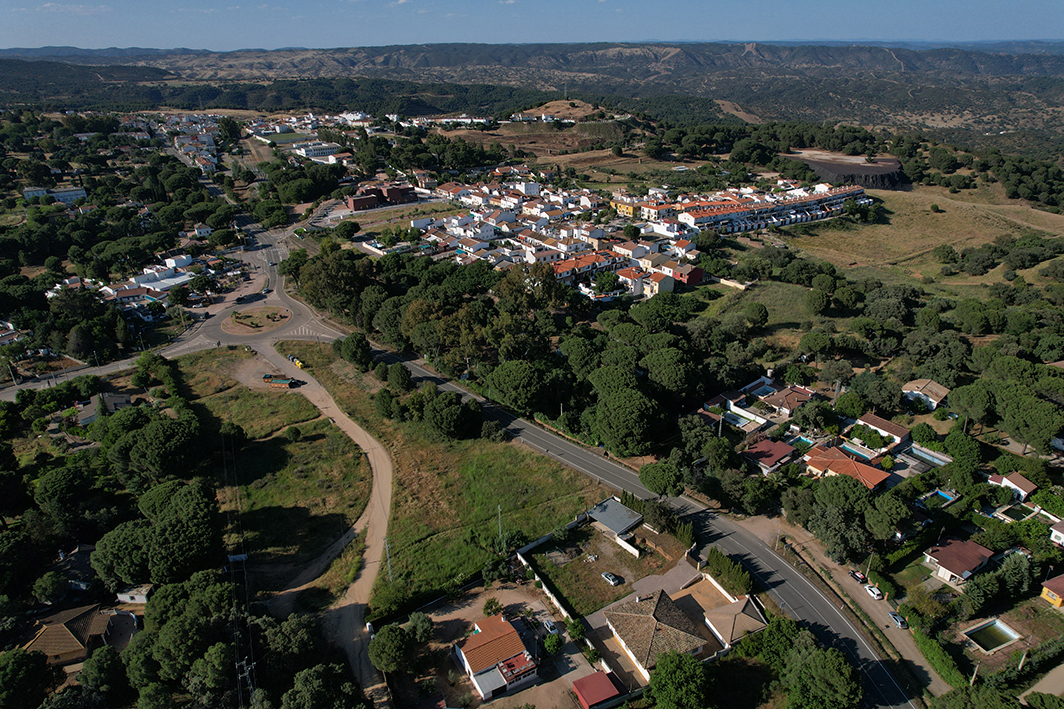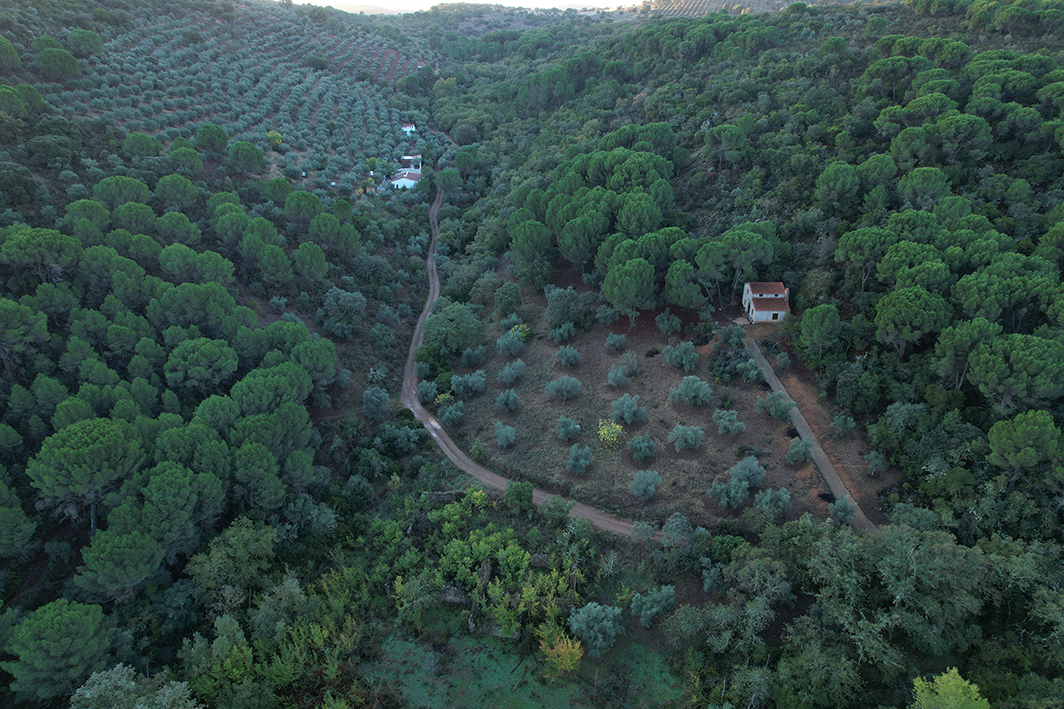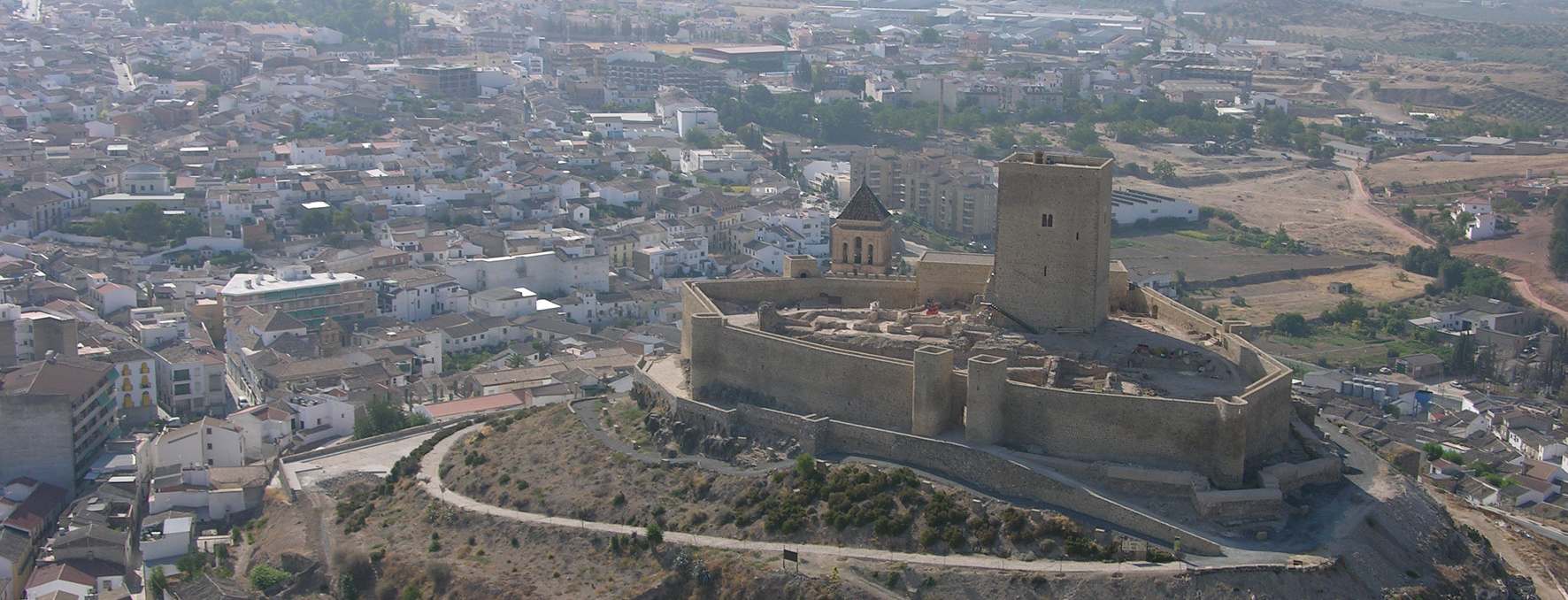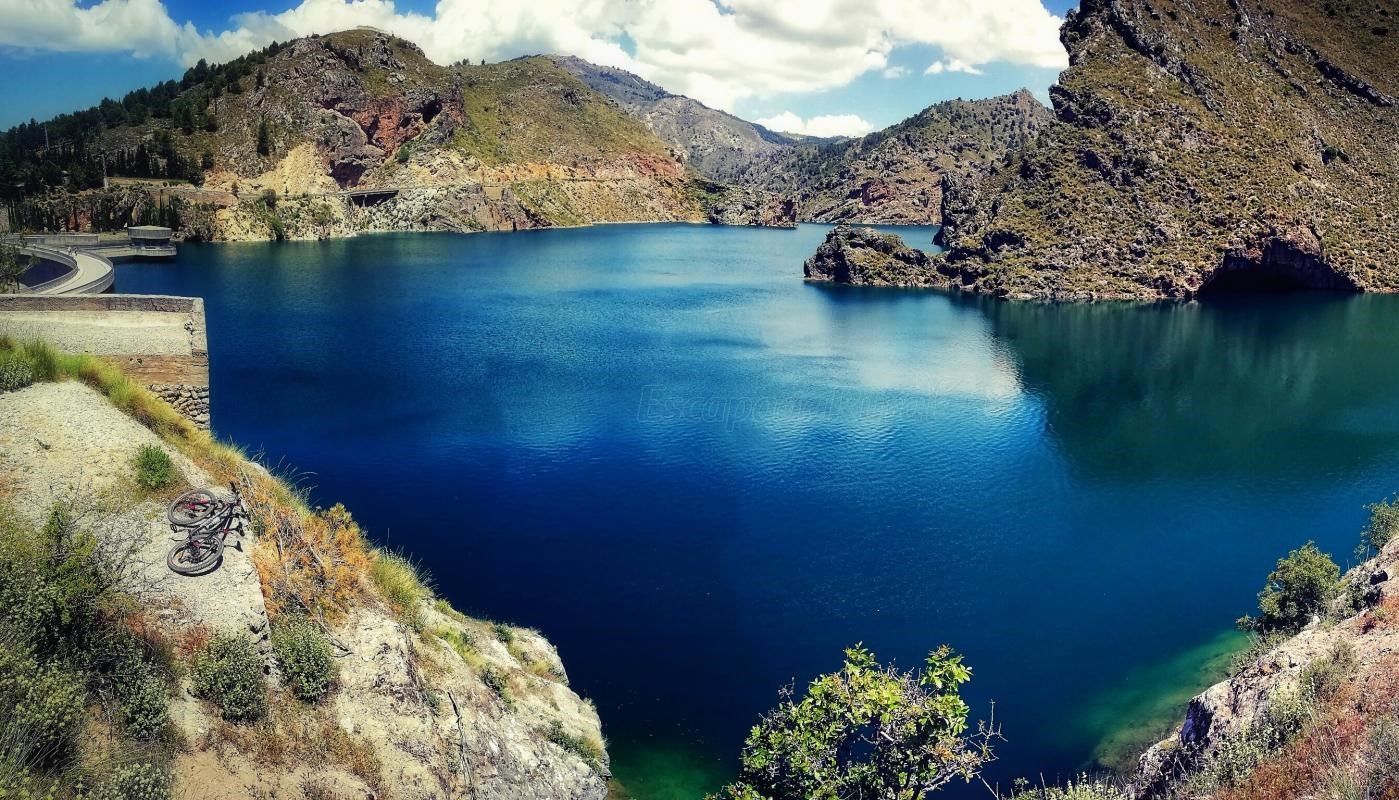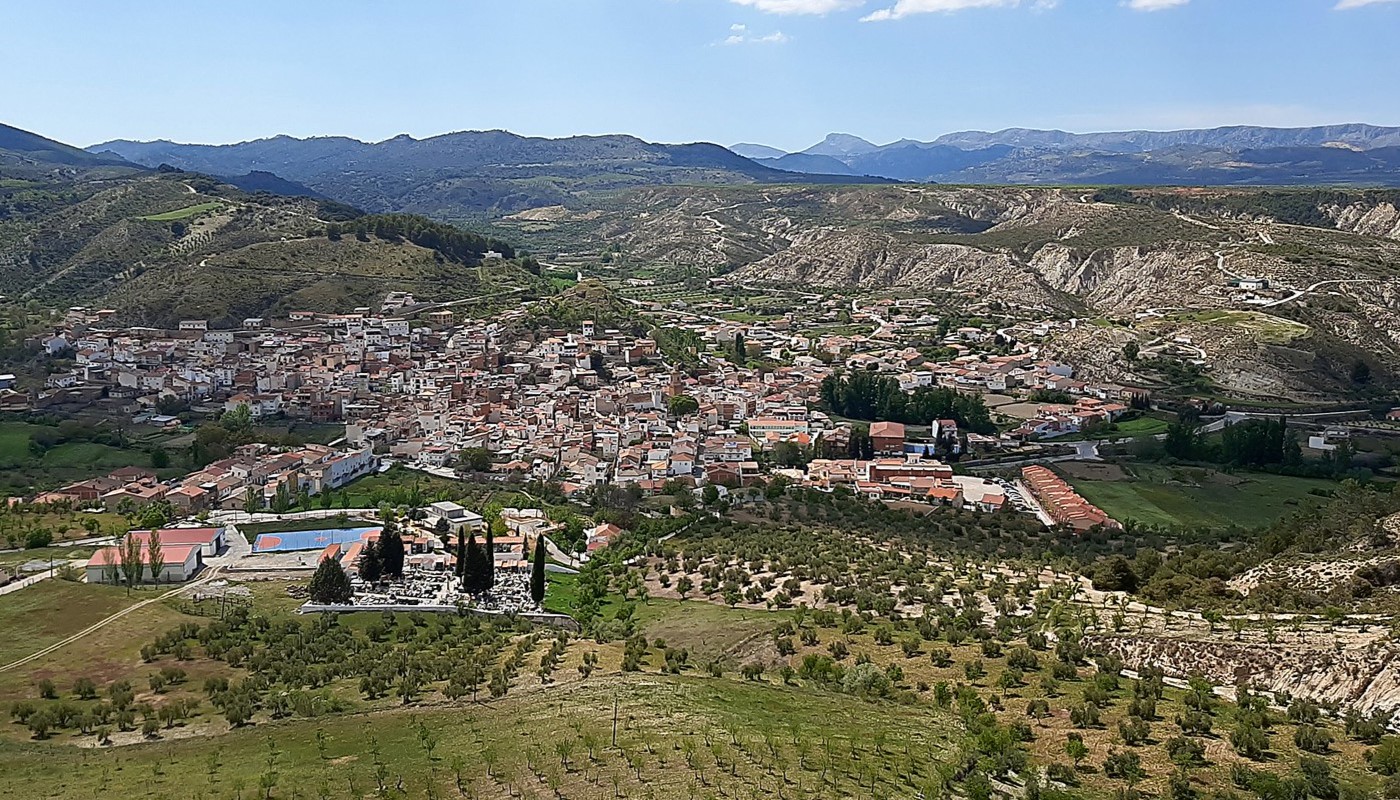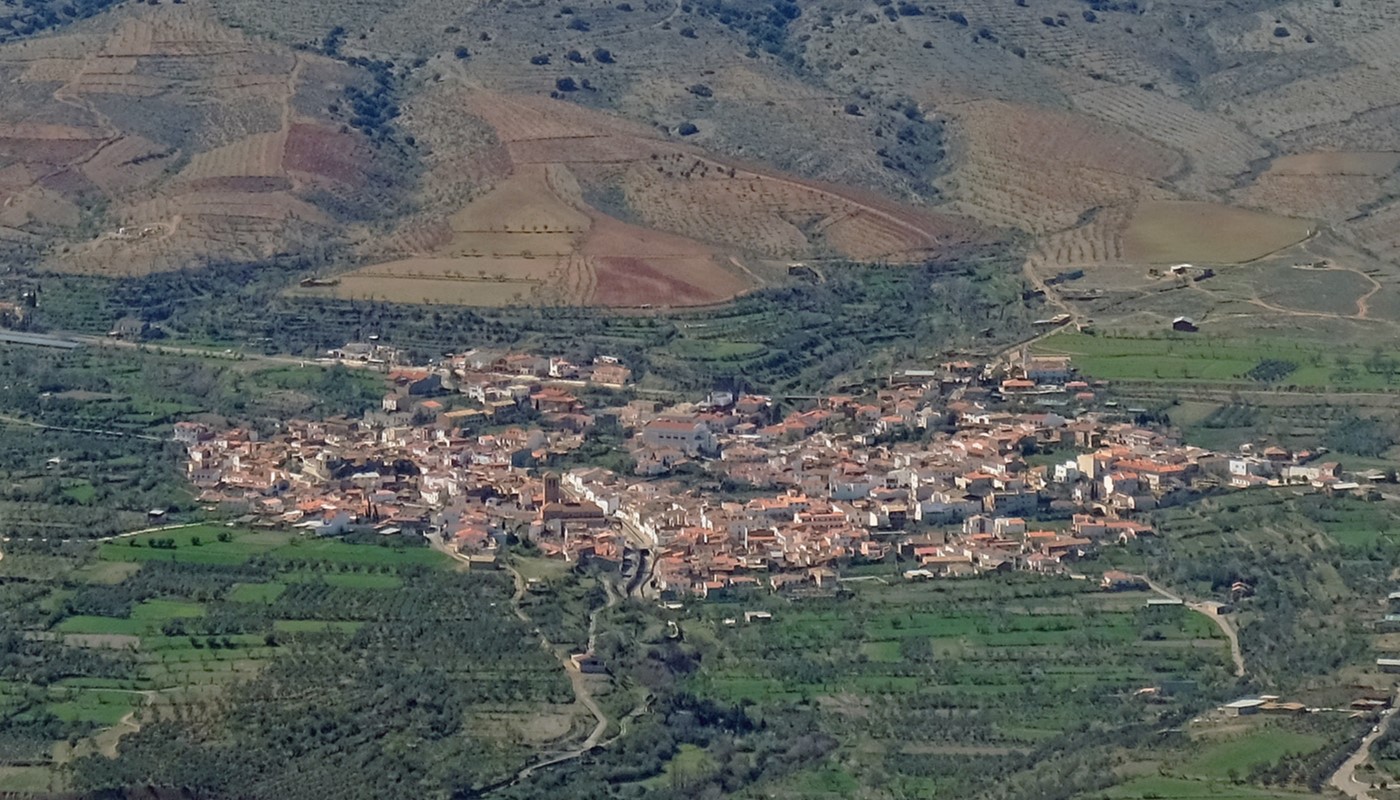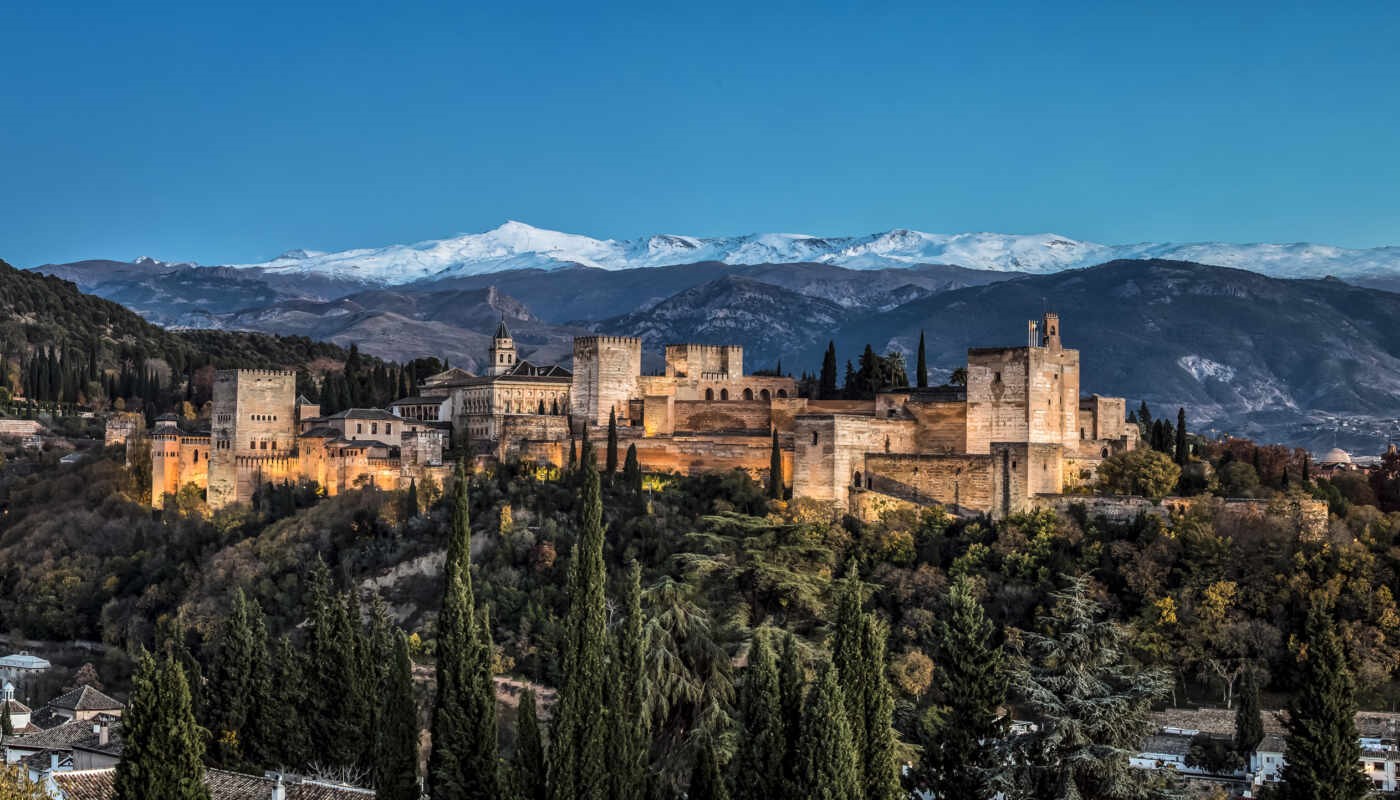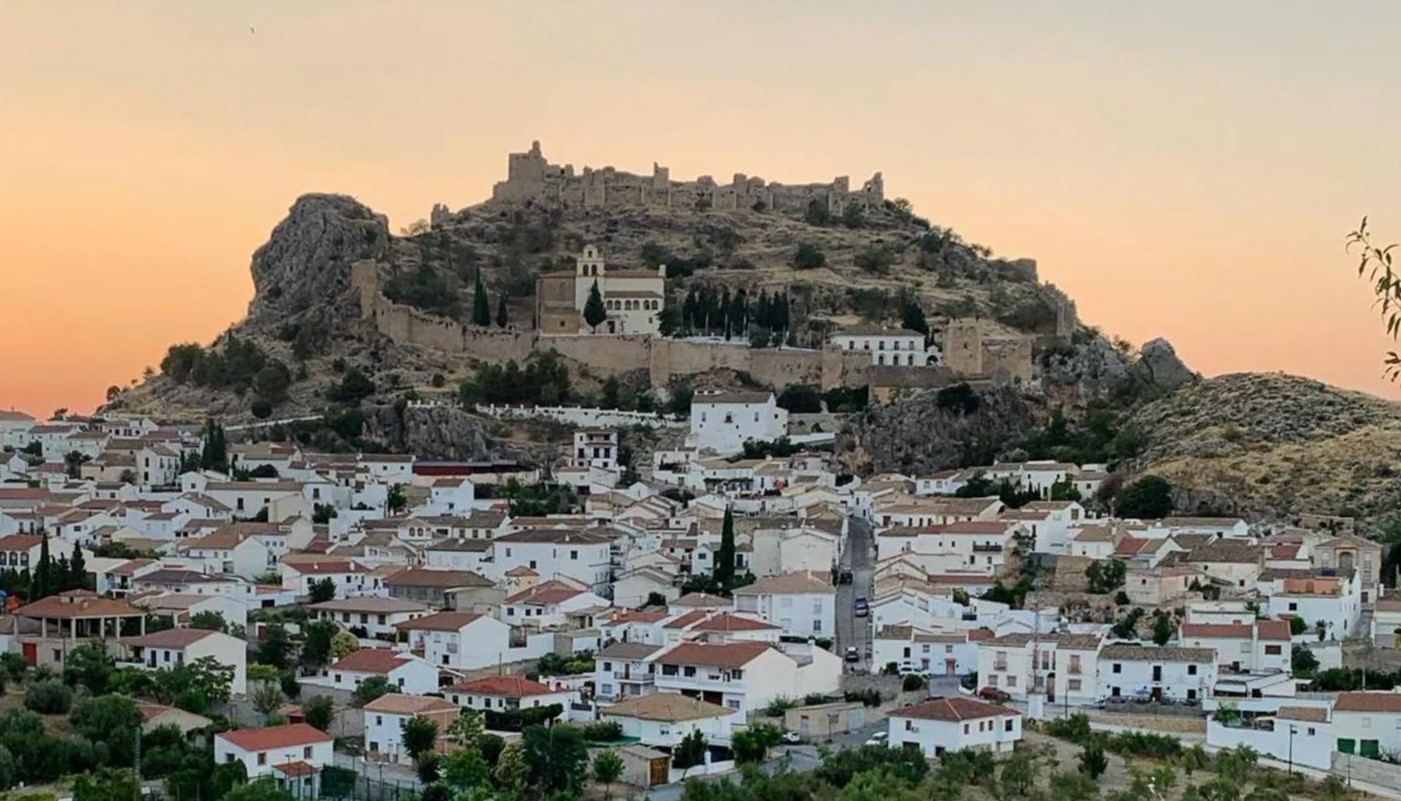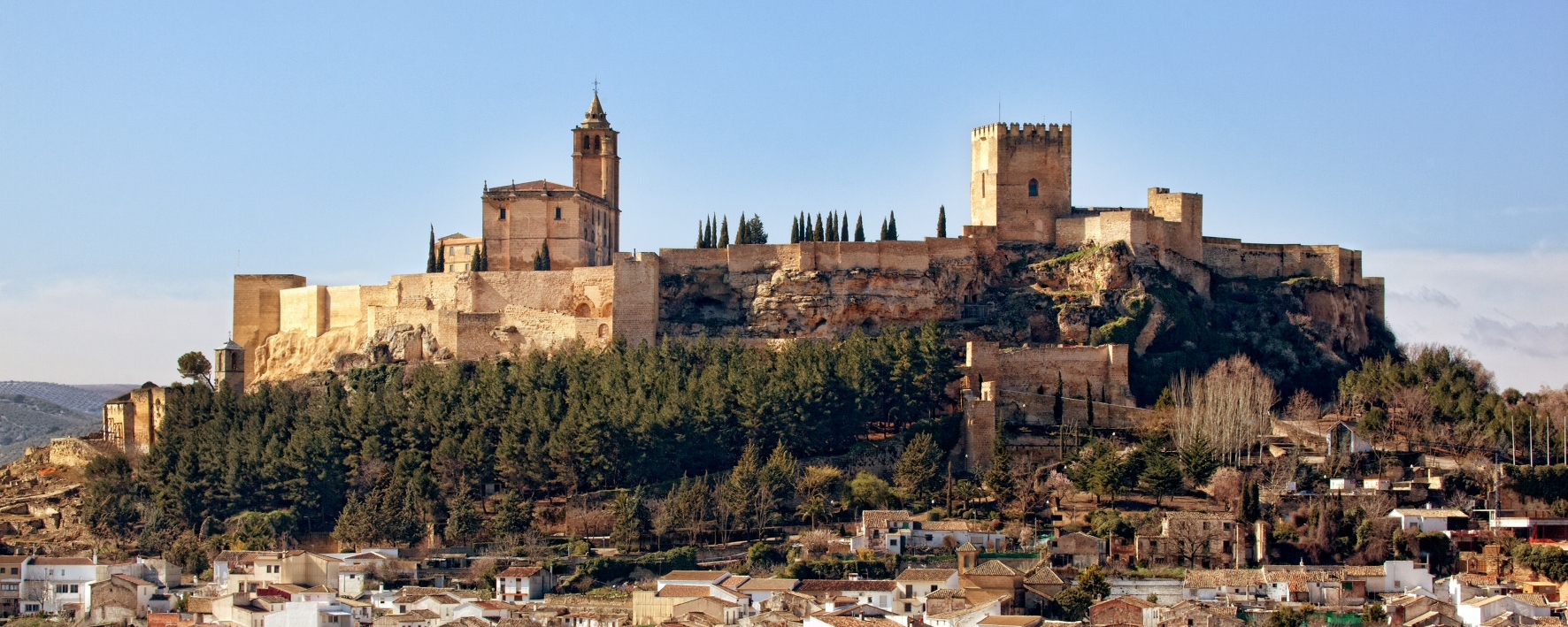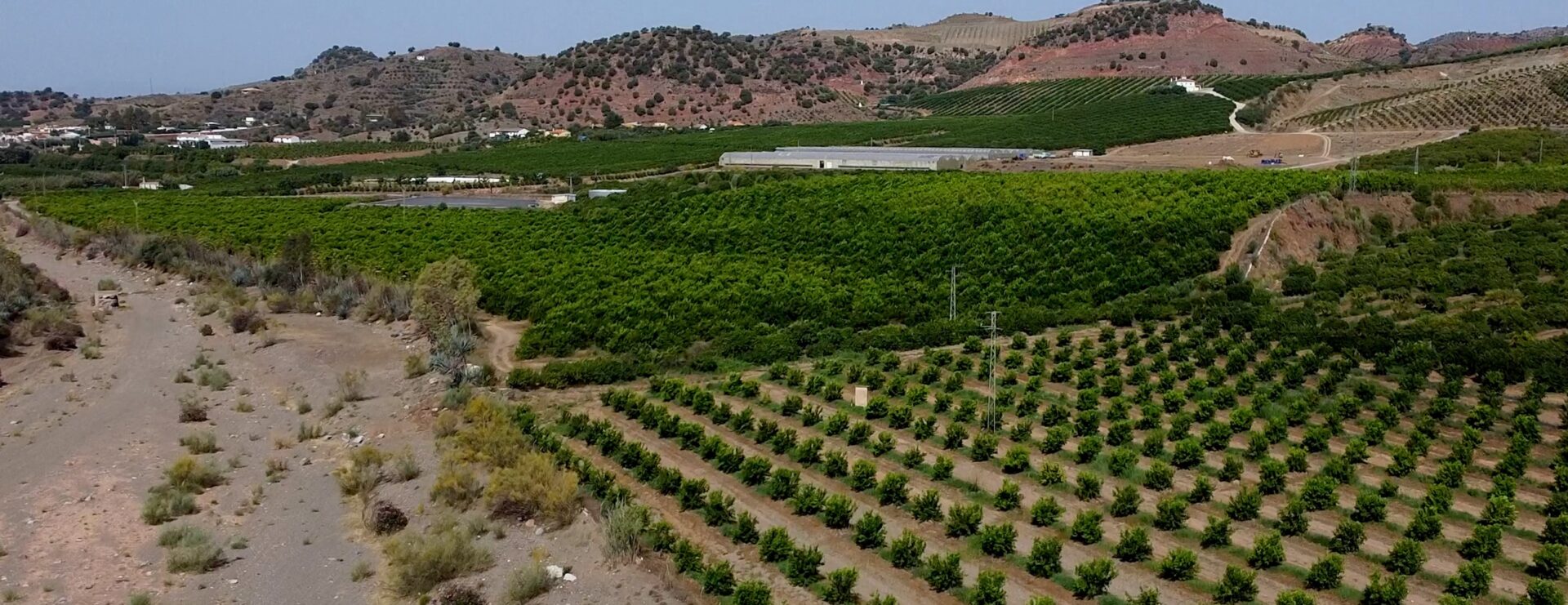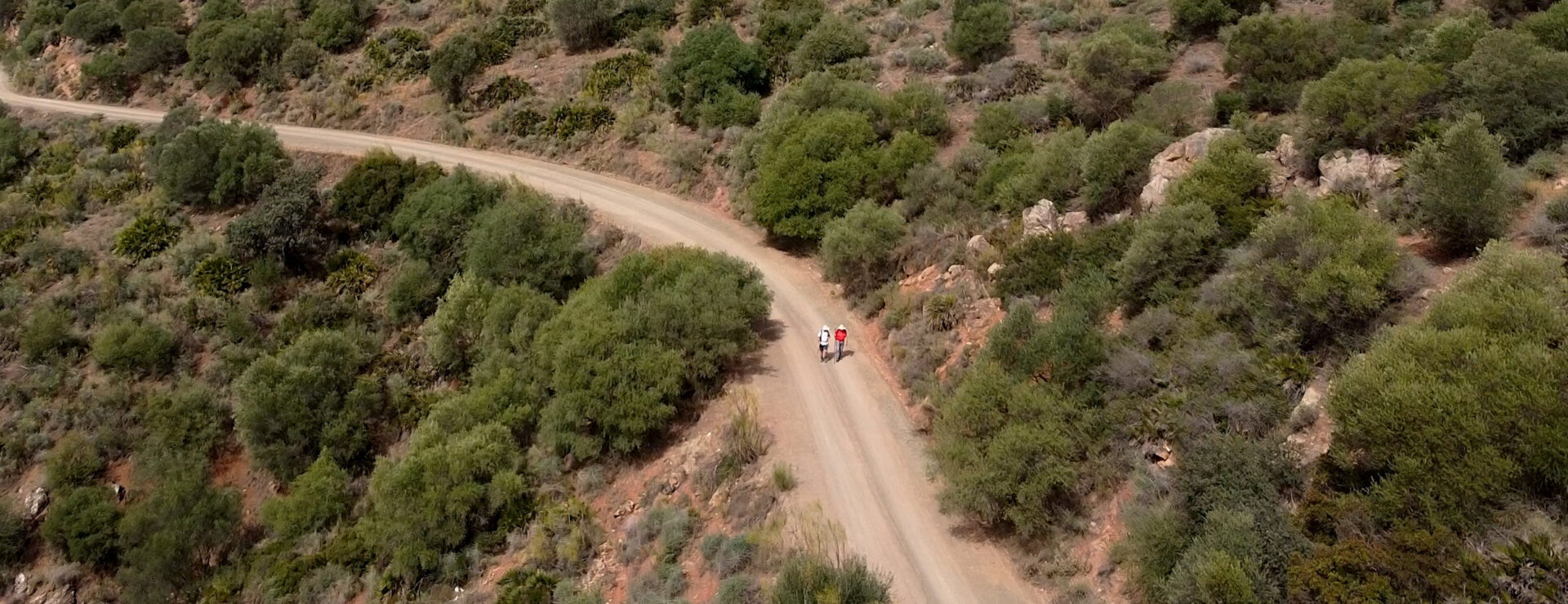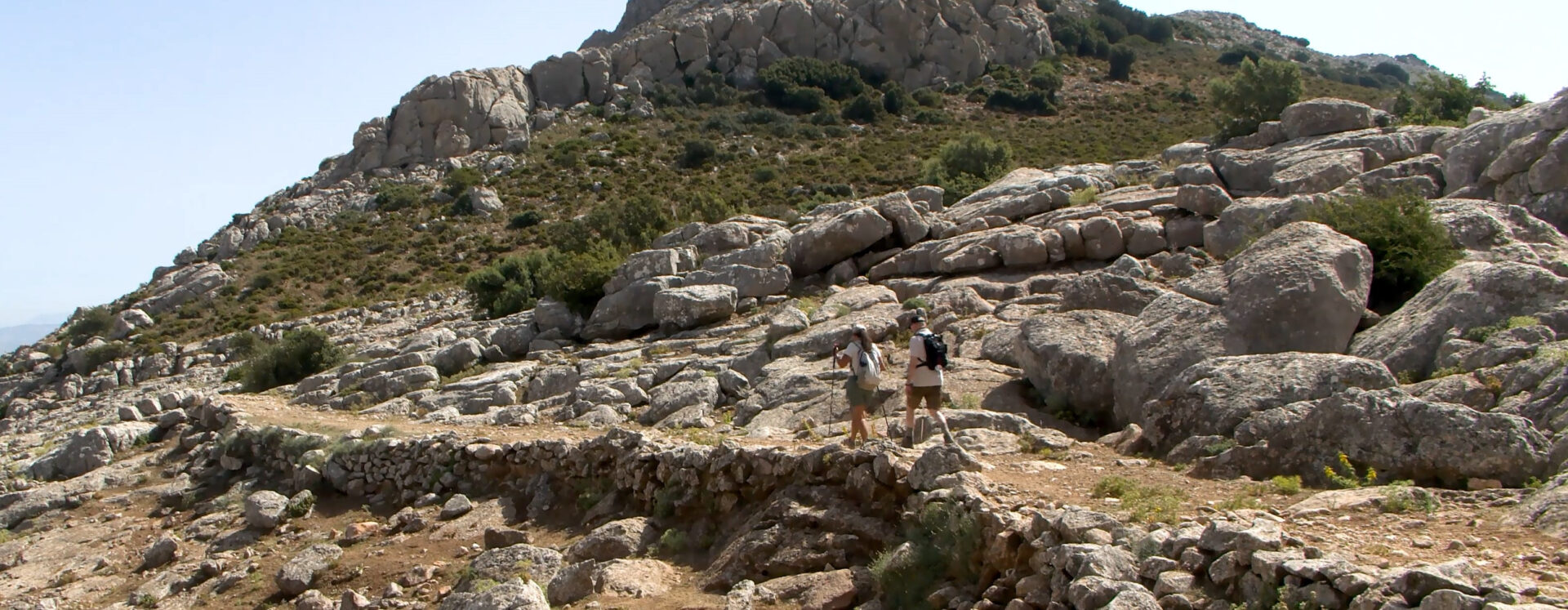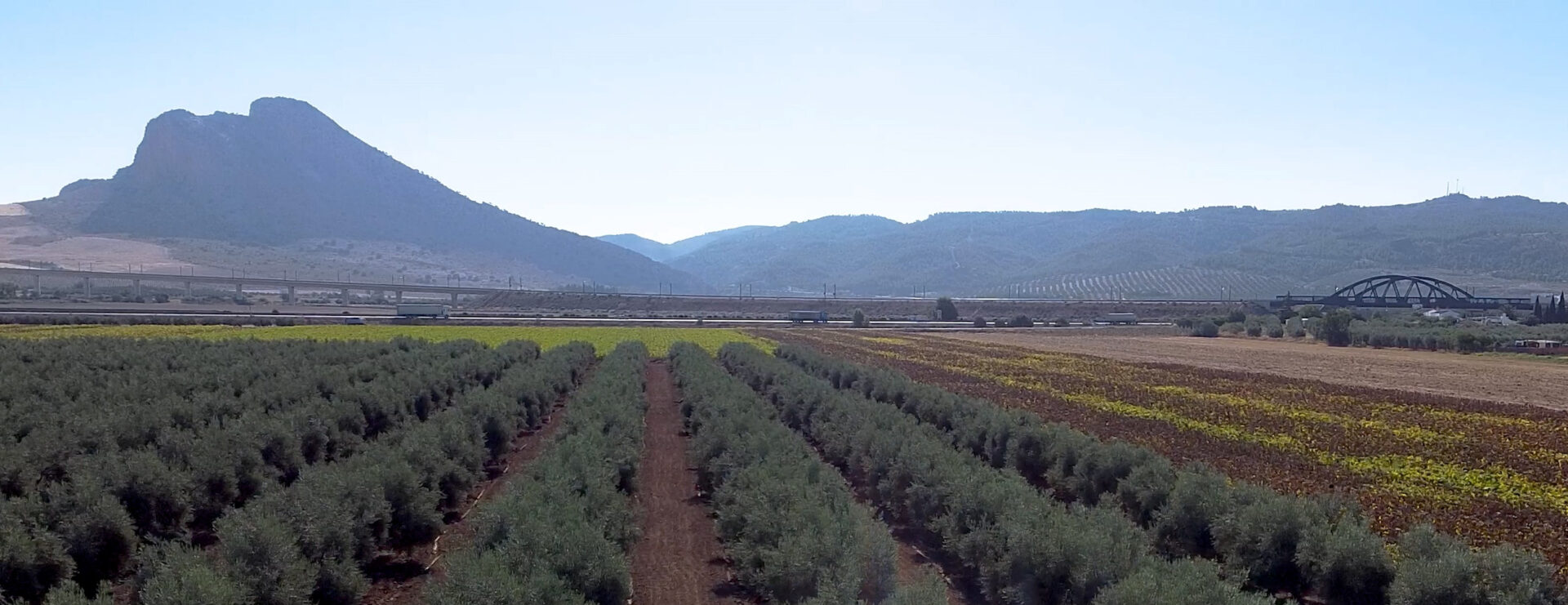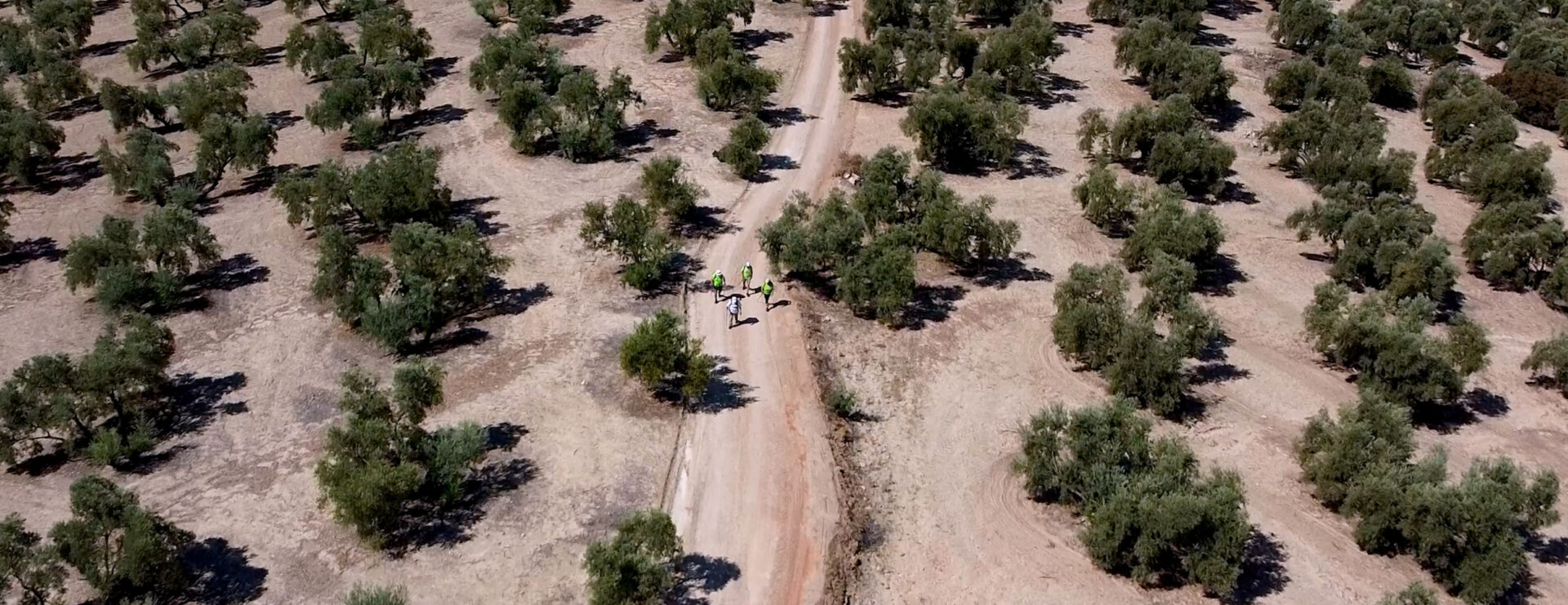Routes and stages
In this section we want to describe all the stages of the Mozarabic Way of St. James in the different provinces that host it. The stages that make up the route in a province make up the route of the Jacobean Way in that province. Almeria route, Badajoz route, Cordoba route, Granada route, Jaen route and Malaga route. We thought it was more interesting to do it this way than to do the routes only from the provinces of origin. As would be the Routes of Almeria, Jaen and Malaga. In this way, each province has the same role and it is not necessary to repeat information in the provinces where they converge.
Almeria
The Mozarabic Way is a hidden gem among the Jacobean routes, and Almeria is the perfect gateway to discover this unique experience. Embarking on the Camino from Almeria is to immerse yourself in a journey that combines history, nature and the warm hospitality of a land that will welcome you with open arms.
From the monumental Cathedral of Almeria, where your adventure begins, every step will take you through landscapes that captivate and surprise. The province of Almeria, with its unparalleled geographical diversity, unfolds before you in a range of contrasts: from the arid lands that evoke the grandeur of the desert, to the fertile valleys that give life to the crops that have sustained its inhabitants for centuries.
The first stage, which will take you from Almeria to the picturesque village of Rioja, is just the beginning of a journey that will immerse you in the purest essence of Andalusia. As you progress, you will come across small towns where time seems to have stood still, each with its own character and charm, such as Santa Fe de Mondújar, Alboloduy and Abla, where traditions are kept alive and the historical legacy is felt in every corner.
The trail will lead you through the Sierra de los Filabres, where the mountainous landscapes will offer you spectacular views and the opportunity to reconnect with nature in its purest state. Here, the silence of the mountains and the purity of the air will accompany you in your reflection and personal growth, as you follow in the footsteps of the ancient Mozarabic pilgrims who, like you, sought a journey beyond the physical.
Almeria, with its endless hours of sunshine, clear skies and unique blend of cultural influences, is the perfect starting point for an adventure that will mark you for life. The Mozarabic Way from Almeria is more than a pilgrimage; it is a journey into the interior, an opportunity to discover landscapes that seem like something out of a dream, villages that retain their authenticity, and people that will make your experience unforgettable.
Dare to start in Almeria, and let this land of contrasts and unexplored beauty be the setting for one of the most memorable adventures of your life. The Mozarabic Way awaits you, and Almeria has the keys to open its doors for you.
Stages
Badajoz
The Mozarabic Way to Santiago as it passes through the province of Badajoz is a journey full of history, nature and spirituality, which allows pilgrims to enter the heart of Extremadura. Along this stretch, the traveler discovers serene landscapes and charming towns, while following in the footsteps of ancient Mozarabic pilgrims.
The route begins in Monterrubio de la Serena, crossing pastures and fields until reaching Castuera, known for its tradition in the production of cheese. This first route, which continues to Campanario, stands out for its rural tranquility, where the wide horizons and the leisurely pace of the villages allow the pilgrim to connect with the most authentic essence of the region. Campanario, with its cozy atmosphere, is an excellent place to enjoy the hospitality of Extremadura.
From Campanario, the road advances towards Medellín, a place steeped in history and culture. In this stretch, the rural landscape continues to predominate, offering wide views and gentle hills, until the traveler comes across the majestic figure of the castle of Medellín. This town is famous for being the birthplace of Hernán Cortés and has impressive monuments such as its Roman theater and medieval fortress, which offer pilgrims a trip back in time before continuing their journey.
After leaving Medellín, the trail enters a stage that crosses the small town of Yelbes and follows its course to the Búrdalo River. As the pilgrim advances, the landscape changes subtly, revealing a more open and less populated nature, providing a perfect opportunity for reflection. The journey ends in San Pedro de Mérida, a small and cozy village where the pilgrim can rest and recharge for the next day.
The final stretch takes pilgrims from San Pedro de Mérida to the monumental city of Mérida, passing through Trujillanos. This last stretch is a route full of serenity, where the rural landscape of Extremadura continues to accompany the walker until, suddenly, the splendor of Mérida appears before him, with its impressive Roman remains that stand as witnesses of a millenary civilization. The arrival at Mérida is an exciting moment for the pilgrim, since, in addition to being a place of great historical and cultural importance, it represents a key stage on the road to Santiago. From this point, the Mozarabic Way will become the Silver Route.
Each of these stages of the Mozarabic Way in Badajoz offers a unique experience, combining landscapes of great natural beauty with villages full of history and tradition. The pilgrim, along the way, not only approaches his final destination in Santiago, but also lives an experience of introspection and connection with the rich culture of Extremadura.
Córdoba
The Jacobean routes that make up the Mozarabic Way in Andalusia converge in this province. On the one hand, the route of the Mozarabic Way that starts in Malaga to the town of Encinas Reales. And on the other hand, the route of the Mozarabic Way from Jaen, which also includes those corresponding to Almeria and Granada to the town of Baena.
Baena is a very interesting meeting point for the confluence of the Andalusian Jacobean routes. It has a very important historical and artistic value and a provision of adequate services for the needs of Mozarabic pilgrims.
The Jacobean route of Cordoba will also show the pilgrim along its stages a very expressive image of the province of Cordoba. From the Subbetica to the meadow of Los Pedroches, from the countryside to the mining basins of Guadiato.
Also like the rest of the provinces of this Mozarabic Way with great artistic and historical heritage assets, heritage of all the Roman, Islamic and Christian past that the province has had.
Encinas Reales – Lucena
Lucena – Cabra
Cabra – Doña Mencía
Doña Mencía – Baena
Baena – Castro Del Rio
Castro Del Rio – Espejo
Castro Del Río – Cordoba (By-pass)
Espejo – Santa Cruz
Santa Cruz – Cordoba
Cordoba – Cerro Muriano
Cerro Muriano – Villaharta
Villaharta – Alcaracejos
Alcaracejos – Hinojosa Del Duque
Hinojosa Del Duque – Monterrubio De La Serena
Alcaudete – Baena
Cuevas Bajas – Encinas Reales
Grenada
The Mozarabic Way to Santiago in the province of Granada is one of the most captivating routes for pilgrims seeking to cross diverse landscapes, from imposing mountains to fertile valleys, while immersing themselves in the rich history and culture of Andalusia. This stretch of the road allows you to discover a millenary heritage that has witnessed the passage of civilizations and pilgrims over the centuries.
The route begins in Huéneja, between mountains, and advances towards Alquife, known for its old iron mines. From there, the road leads to Guadix, famous for its cave-houses and cathedral, in a stretch steeped in history. Continuing on to La Peza, the pilgrim passes through more demanding, but equally beautiful mountain scenery, until reaching the tranquility of Quéntar, with its relaxing natural environment.
The journey to Granada is one of the most exciting moments, as the walker approaches this monumental city, home of the Alhambra. After discovering the cultural richness of Granada, the route continues to Pinos Puente, an agricultural village surrounded by the serenity of the fields of the Vega. Finally, the last stage leads to Moclín, crowned by its castle, where pilgrims enjoy breathtaking mountain views and the feeling of having traveled a route full of history and beauty. From Moclín, the road enters the province of Jaén until it reaches Alcalá La Real.
The Mozarabic Way in Granada is not only a physical journey, but also a spiritual one, where each stage is an opportunity to discover the rich past of this region, its varied landscapes and the warmth of its people. Pilgrims who walk these seven stages experience a deep connection with nature and history, as they advance towards their final goal in Santiago.
Jaen
The Mozarabic Way of St. James is one of the oldest routes, with more history and traditions of the peninsula, connects from Andalusia with the provinces of Jaen, Almeria, Granada, Malaga, all of them converge in the province of Cordoba and starts a single route to Merida province of Badajoz and continue along the Via de la Plata to Santiago de Compostela. As it passes through the province of Jaén, it offers pilgrims the opportunity to travel through landscapes steeped in history, culture and nature. This route has its roots in the times of the Muslim domination, when the Mozarabic Christians who lived in Muslim territory used this road to go to Santiago de Compostela.
The province of Jaén has two main routes of the Mozarabic Way, both crossing the Sierra Sur of the region. One of them starts in the capital Jaén, where pilgrims depart from the Cathedral of Jaén, a jewel of the Renaissance. From there, the route continues its course through the municipalities of Torredelcampo, Jamilena, Martos and Alcaudete, before entering the province of Córdoba. The other road comes from Granada, this one links to its passage through Alcalá La Real, Castillo Locubín, Ventas de Carrizal until it also reaches Alcaudete, from where both roads will join into a single one, on the way to the province of Córdoba.
One of the most outstanding aspects of the Mozarabic Way in this region is the deep historical legacy that can be found along its route. The Sierra Sur de Jaén has been, for centuries, a strategic area that marked the border between the Nasrid and Christian kingdoms. This territory witnessed long struggles and also periods of coexistence and cultural exchange. The defensive systems that mark the region, such as the Fortaleza de la Mota in Alcalá la Real or the Calatrava Castle of Alcaudete, are witnesses of the strategic importance of these lands in the control of roads and trade routes.
The Mozarabic Way is not only a spiritual route, but also a journey through the history of the region. Along the way, pilgrims walk along the Vía Verde del Aceite, which follows the route of an old railway line. These stages will allow you to enjoy our largest humanized forest in the world, “El Olivar” with more than 66 million olive trees strategically located, with a unique beauty that will make you enjoy the way. During the tour, you can glimpse the influence of civilizations such as the Iberians, Romans and Arabs, who left their mark on the architecture, agriculture and traditions of the region.
In short, the Mozarabic Way of St. James as it passes through Jaén is an ideal option for those seeking a quieter pilgrimage connected to history and nature, with landscapes dominated by olive trees, small towns and historic monuments. This route offers a unique experience, marked by simplicity and spirituality, allowing pilgrims to connect with the legacy and traditions of the province.
Jaén – Martos
Alcalá La Real – Alcaudete
Moclín – Alcalá La Real
Martos – Alcaudete
Alcaudete – Baena
Malaga
The Mozarabic Way of St. James in the province of Malaga is a journey that captures the essence of Andalusia, combining history, nature and culture in a journey of almost 100 kilometers. This trail, which is part of the Gran Recorrido GR 245, invites pilgrims to explore the diversity of landscapes and the rich cultural heritage that only Malaga can offer.
Beginning at the iconic church of Santiago Apostle, in the heart of Malaga capital, the route goes into the interior of the province, passing through charming villages such as Almogía, with its authentic Andalusian flavor, and Villanueva de la Concepción, the gateway to the spectacular Torcal de Antequera, declared a World Heritage Site by UNESCO. The route continues to Antequera, a city that is a true cultural treasure in the heart of Andalusia.
The route through the province of Malaga takes pilgrims through tranquil rural landscapes, with centuries-old olive trees and small villages, passing through towns such as Villanueva de Algaidas and Cuevas Bajas. Each stage reveals a new facet of Malaga’s rich history and vibrant culture, offering a unique experience that combines the serenity of nature with the warmth of its people.
Crossing the province of Malaga on the Mozarabic Way is much more than a journey to Santiago de Compostela; it is an opportunity to discover the very essence of Andalusia, where every step connects the pilgrim with the history and beauty of this unique land.
Bon Camino!
















